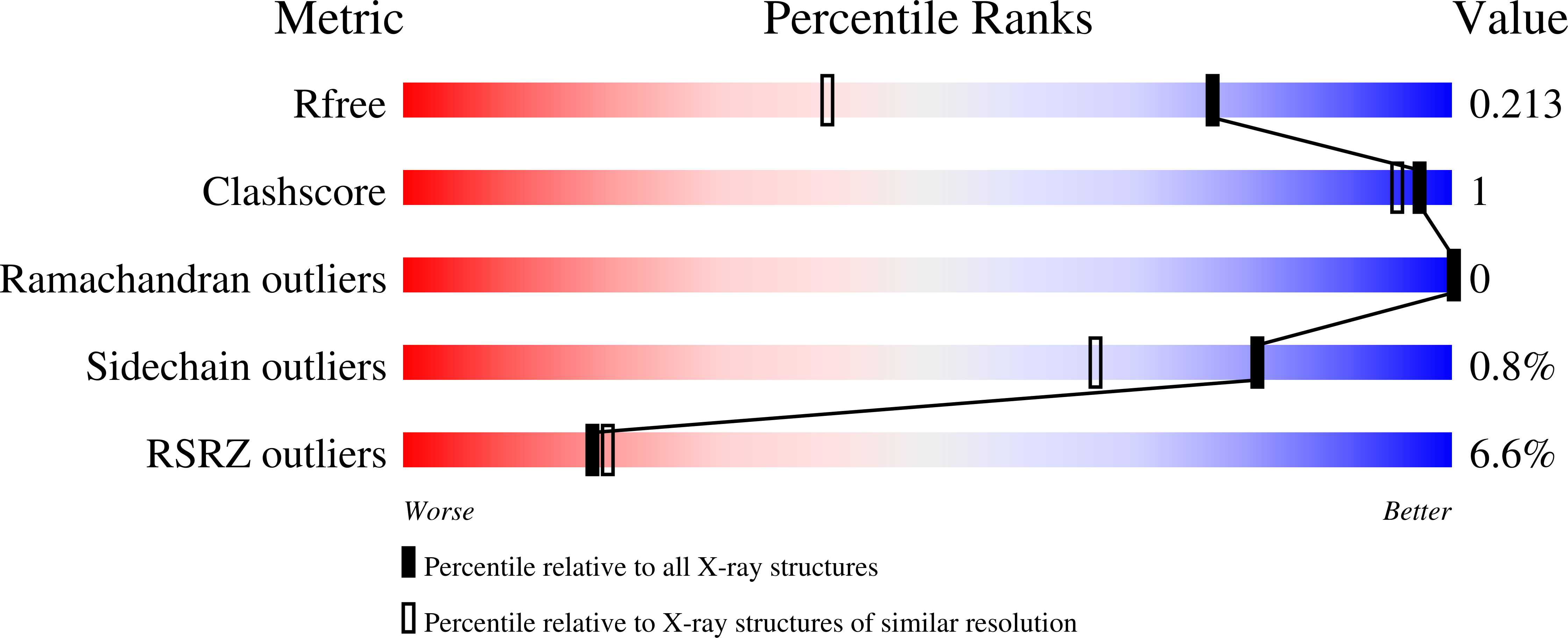A Conformation Selective Mode of Inhibiting SRC Improves Drug Efficacy and Tolerability.
Temps, C., Lietha, D., Webb, E.R., Li, X.F., Dawson, J.C., Muir, M., Macleod, K.G., Valero, T., Munro, A.F., Contreras-Montoya, R., Luque-Ortega, J.R., Fraser, C., Beetham, H., Schoenherr, C., Lopalco, M., Arends, M.J., Frame, M.C., Qian, B.Z., Brunton, V.G., Carragher, N.O., Unciti-Broceta, A.(2021) Cancer Res 81: 5438-5450
- PubMed: 34417202
- DOI: https://doi.org/10.1158/0008-5472.CAN-21-0613
- Primary Citation of Related Structures:
7NG7 - PubMed Abstract:
Despite the approval of several multikinase inhibitors that target SRC and the overwhelming evidence of the role of SRC in the progression and resistance mechanisms of many solid malignancies, inhibition of its kinase activity has thus far failed to improve patient outcomes. Here we report the small molecule eCF506 locks SRC in its native inactive conformation, thereby inhibiting both enzymatic and scaffolding functions that prevent phosphorylation and complex formation with its partner FAK. This mechanism of action resulted in highly potent and selective pathway inhibition in culture and in vivo . Treatment with eCF506 resulted in increased antitumor efficacy and tolerability in syngeneic murine cancer models, demonstrating significant therapeutic advantages over existing SRC/ABL inhibitors. Therefore, this mode of inhibiting SRC could lead to improved treatment of SRC-associated disorders. SIGNIFICANCE: Small molecule-mediated inhibition of SRC impairing both catalytic and scaffolding functions confers increased anticancer properties and tolerability compared with other SRC/ABL inhibitors.
Organizational Affiliation:
Cancer Research UK Edinburgh Centre, Institute of Genetics & Cancer, University of Edinburgh, Edinburgh, United Kingdom.
















